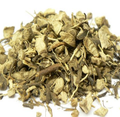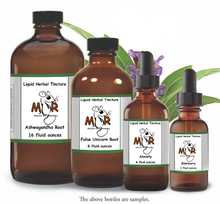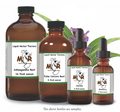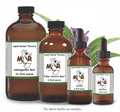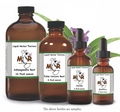 Loading... Please wait...
Loading... Please wait...- Home
- Herbal Tinctures
- Herbal Tinctures - Single Herbs
- Yan Hu Suo Root Tincture
Yan Hu Suo Root Tincture
Product Description
Yan Hu Suo Tincture
Also Known As – Corydalis Ambigua
Overview - Lately there's been a lot of interest in corydalis root as a potential treatment for the Western disease known as fibromyalgia. In Chinese traditional medicine there are several different disease patterns that are usually diagnosed as fibromyalgia. Corydalis is a potential ingredient in most any formula used to treat pain.
The root of the Corydalis plant is known as YAN HU SUO. It is also known as Engosaku in Japan, and Yonhosaek in Korean. YAN HU SUO is classified as a Blood Vitalizer in Traditional Chinese Medicine.
Most Blood Vitalizer (Movers) are used used for pain relief, and most, including corydalis, are forbidden during pregnancy and nursing, as their strong blood moving characteristics could influence or detach a young fetus.
Many practitioners of Traditional Chinese herbal medicine consider YAN HU SUO to be the second most effective pain reliever, opium being the most effective herb for pain. Today, of course, you'll have to see a Western doctor to get opium derivatives. These opiates and opioids, unfortunately, are addictive, drying, and extremely sedating. Corydalis has none of these side-effects, its properties include 'Invigorating the blood' and 'invigorating the Qi', making it useful for a wide variety of painful conditions such as, menstrual pain, abdominal pain, chest pain, hernia pain, and pain from traumatic injuries.
Pharmaceutical companies have recently taken an interest in one chemical constituent of this herb, dehydrocorybulbine (DHCB) as potentially useful in creating new, non opioid, drugs for pain relief. It should be pointed out that there are other active alkaloids this herb including corydaline, dl-tetrahydropalmatine, protopine, corybulbine, β-homochelidonine, and others. The combined alkaloids are considered about 40% as effective as morphine.
Lately, this herb has been recommended by the TV personality Dr. Oz, for treatment of fibromyalgia. I thank Dr. Oz for giving rare mention to Chinese herbs, but there are a few things that Dr. Oz didn't have time to say. First, is that Corydalis should be avoided during pregnancy and nursing; and just as important is the fact that this herb is never used alone. It is almost always used together with other herbs in formulas. For example, it is combined with herbs such as RU XIANG (frankincense) and MO YAO (myrrh) for pain from injuries, with ROU GUI (cinnamon bark) for menstrual pain, with XIAO HUI XIANG (fennel) for hernia pain, and with CHUAN XIONG (Liguisticum) for headache. Its pain relieving properties can also be enhanced by frying the whole herb in vinegar.
Research has shown that the herb has a light hypnotic and sedative effect in many animals and reduces menstrual flow and pain in humans. In an other experiment, ingestion by humans produced no gastric side effects.
Features and description:
- NON GMO!
- Gluten Free!
- Highest Strength Yan Hu Suo Tincture!
- Yan Hu Suo tincture contains natural ingredients!
- High Quality Yan Hu Suo Tincture - we use classic conventional methods of extraction!
- Super concentrated Yan Hu Suo tincture: dried material / solvents ratio is 1:2 with No Water Added!
Indications: Do not use if seal is broken or missing.
Safety information: Keep out of reach of children. If you are pregnant, nursing or taking any medications, consult your doctor before use. Discontinue use and consult your practitioner if any adverse reactions occur. Excessive consumption may impair ability to drive a motor vehicle or operate heavy equipment.
Suggested use and dosage: Shake well before use. Take 6-12 drops two - three times per day or as directed by your practitioner.
Disclaimer - The information presented herein by Mountain Maus’ Remedies is intended for educational purposes only. These statements have not been evaluated by the FDA and are not intended to diagnose, cure, treat or prevent disease. Individual results may vary, and before using any supplements, it is always advisable to consult with your own health care provider.


